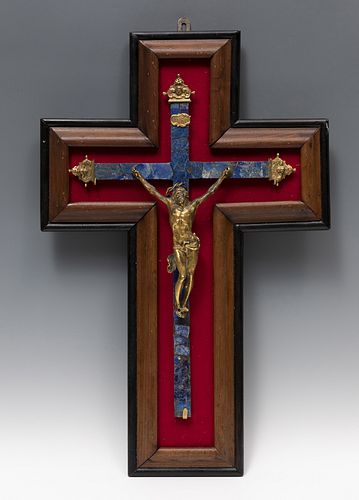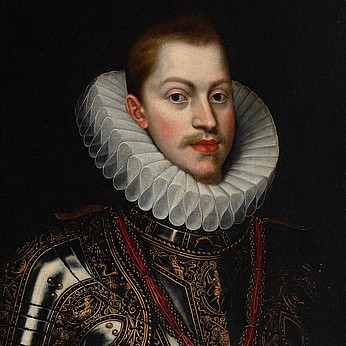Crucified Christ; Spanish School; XVIII century. Gilded bronze and lapis lazuli cross.
Lot 1
About Seller
Setdart Auction House
Carrer Aragó 346
Barcelona
Spain
Setdart Subastas was born in 2004 and is currently the first online art auction in Spain with solidity, prestige and reliability guaranteed by our more than 60,000 users. Setdart has a young, dynamic and enterprising team ready to successfully manage the purchase and sale of art works through custom...Read more
Categories
Estimate:
EUR€5,000 - EUR€6,000
$5,208.33 - $6,250
Absentee vs Live bid
Two ways to bid:
- Leave a max absentee bid and the platform will bid on your behalf up to your maximum bid during the live auction.
- Bid live during the auction and your bids will be submitted real-time to the auctioneer.
Bid Increments
| Price | Bid Increment |
|---|---|
| EUR€0 | EUR€10 |
| EUR€200 | EUR€25 |
| EUR€500 | EUR€50 |
| EUR€1,000 | EUR€100 |
| EUR€3,000 | EUR€200 |
| EUR€5,000 | EUR€500 |
| EUR€10,000 | EUR€1,000 |
| EUR€20,000 | EUR€2,000 |
| EUR€50,000 | EUR€5,000 |
About Auction
By Setdart Auction House
Nov 24, 2021
Set Reminder
2021-11-24 09:00:00
2021-11-24 09:00:00
America/New_York
Bidsquare
Bidsquare : Old Masters, Day 1
https://www.bidsquare.com/auctions/setdart-auction-house/old-masters-day-1-7873
Setdart Auction House sofia@setdart.com
Setdart Auction House sofia@setdart.com
- Lot Description
Crucified Christ; Spanish School; XVIII century. Gilded bronze and lapis lazuli cross. Measurements: 60 x 40 cm. This work shows the viewer a great example of the coexistence between art and craftsmanship. The author leaves no detail to chance and pays the same attention to the modeling of Christ's body as to the lapis lazuli work of the cross. The contrast between the gold and the intense blue of the cross gives an expressive dimension to the piece that connects with the viewer, showing values such as subtlety, elegance and richness, associated with the religion and tradition represented by the crucifixion. The figure of Christ on the cross already came from the Romanesque period, in which there were two types: the colobium (living Christ, dressed in a tunic) and the perizonium (dressed in a cloth of purity). In the Gothic period the colobium disappears definitively, and Christ will always be represented dressed in a purity cloth, nailed to the cross with three or four nails. In the Romanesque it always appeared with four nails, but in the Gothic it will be more and more frequent the model of three nails, with only one for the feet, as we see here. As the Gothic period progressed, the purity cloth became shorter, until the knees were uncovered, and the anatomical treatment became more and more naturalistic. The one we present here already shows a realistic intention in the treatment of the body, thin and slender, although pathos is avoided in its representation. There were examples of free-standing sculpture, such as processional crosses, which presided over religious rites. This type of object was widely used from the 4th century onwards. Before the 8th century, the crosses hung from the altars, however, this arrangement would change, being placed on a point or lower spike of the altar. The processional crosses are the most important pieces of the ecclesiastical trousseau, usually in number of one per parish. They have the shape of a Latin cross, with a single crossbeam and a longer lower arm. Destined to go on the end of a pole or staff, they open the way in the processional procession.
- Shipping Info
-
In-house shipping available. Please inquire at admin@setdart.com.
-
- Buyer's Premium



 EUR
EUR CAD
CAD AUD
AUD GBP
GBP MXN
MXN HKD
HKD CNY
CNY MYR
MYR SEK
SEK SGD
SGD CHF
CHF THB
THB

















